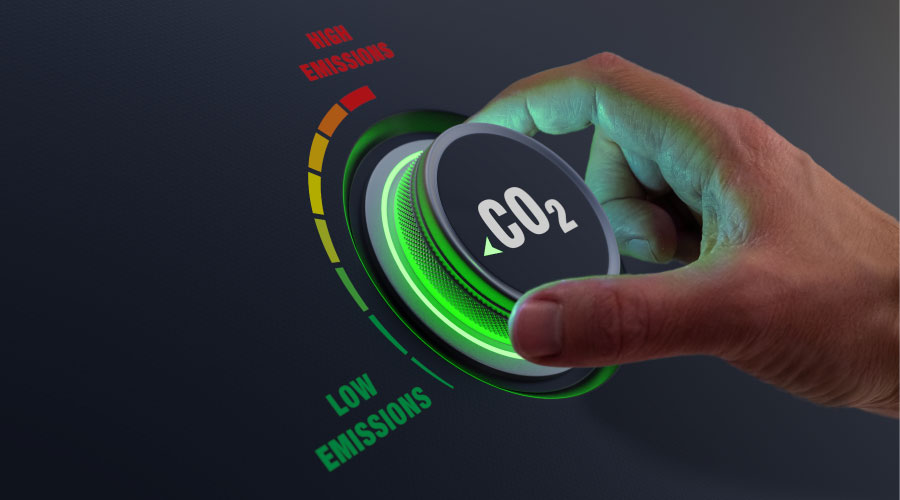Reaping the Benefits of Longer-payback Upgrades
Industry experts offer several tips to help private sector organizations reap the benefits of longer-payback upgrades while minimizing their risks and boosting returns.
"Bundling long-payback energy efficiency measures with shorter-payback items such as lighting can make the combined rate of return more competitive against other potential uses of available funding and allows facility managers to leverage projects into more expansive work with greater potential to reduce the facility's energy use," says Dixon.
That approach can significantly increase energy savings. "Quick-payback retrofits may achieve a savings of 15 percent, but by combining them with longer-payback retrofits, savings may be elevated to 30 percent or more," Fulop says.
There's another important benefit to pursuing energy upgrades with longer paybacks. "The overall ‘personality' or marketability of the building improves due to the various interactions of the systems," says Raathor.
Other ways to maximize the return on a longer-term payback project? ConEd's Dixon suggests that building owners and facility managers "investigate energy performance contracting, which uses the energy savings of the projects to repay a loan; however, in most instances this also requires the business to have a strong balance sheet or some other form of collateral for the loan. Businesses should also consider tax incentives and government or utility rebate programs as a means of buying more project size, especially where those programs pay for short-payback measures like lighting."
The Winds of Change
Despite traditional resistance in the past, industry sources are encouraged by what they see as an increasing acceptance of longer-term payback projects by today's private sector. "We're seeing a growing appreciation for the economic and environmental impact that more comprehensive programs can have," says Taylor. "For example, we're currently working with several companies that have extended their payback requirements from two or three years to as many as seven years, which is considerable progress."
In addition, "the Property Assessed Clean Energy (PACE) legislation passed in more than 20 states is another step in the right direction," says Taylor. There are still issues to be addressed with PACE — notably lien-holder rights and transferability of tax liens to new building owners — but several organizations are tackling those issues today, including the Clinton Climate Initiative.
Overall, longer-payback projects can address the necessary replacement of critical infrastructure, help maximize a building's efficiency, and benefit the environment. "It's the right thing to do for the life cycle of the building and the equipment," says Raathor. n
Susan Bloom is a freelance writer who has 20 years of experience in the lighting and electrical products industry. Her specialty is the energy-efficient and green products arena.
CCI Projects
Through an emphasis on holistic upgrades, companies involved with the Clinton Climate Initiative are helping a broad range of beneficial retrofit projects to materialize.
- Johnson Controls has partnered with the Clinton Climate Initiative to improve New York City's Empire State Building's energy efficiency, with the current $20 million project aiming to reduce the building's energy use by up to 38 percent, its energy costs by $4.4 million annually, and its carbon dioxide emissions by 105,000 metric tons over the next 15 years.
- Using a guaranteed performance-based solution, Siemens provided turnkey design, engineering and construction services for a variety of energy efficiency, water conservation and operational improvements in more than 1.3 million square feet of facilities for the City of Houston.
- Through an ongoing partnership with the Clinton Climate Initiative, Schneider Electric recently entered into a $23 million performance contract with the City of Houston which will implement numerous energy conservation measures in 19 city buildings.
- Honeywell recently launched an energy-savings program in Puerto Rico's Public Buildings Authority headquarters, which will involve energy-efficient measures from lighting to renewable energy technologies such as solar and wind.
|
The Clinton Climate Initiative and Building Retrofit Program
Founded in 2005, the Clinton Climate Initiative, a project of the William J. Clinton Foundation, works with governments and businesses around the world to develop programs that are economically and environmentally sustainable. The group focuses on three strategic areas — reducing emissions in cities, catalyzing the large-scale supply of clean energy, and working to measure and value the carbon absorbed by forests.
The Clinton Climate Initiative's Energy Efficiency Building Retrofit Program brings together some of the world's largest cities, energy service firms and financial institutions to reduce energy consumption in existing buildings. The Clinton Climate Initiative is working on 250 individual and multi-building energy efficiency projects around the world, which represent over 500 million square feet of space. The over 400 building projects that are either in process or completed will prevent the estimated release of over 120,000 metric tons of carbon dioxide into the atmosphere each year.
Working with energy efficiency contractors as well as financial, government, and building partners, the Building Retrofit Program aims to overcome market barriers and develop contracting and procurement models and financial solutions that accelerate the growth of the global building efficiency market. The Clinton Climate Initiative provides pro bono support to building owners such as city governments, commercial organizations, schools, universities, and housing authorities in identifying, designing, and implementing large-scale energy efficiency retrofit projects.
For more information, visit www.clintonfoundation.org/cci or www.clintonfoundation.org/what-we-do/clinton-climate-initiative/our-approach/cities/building-retrofit. |
Related Topics:












